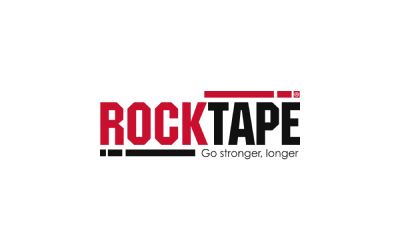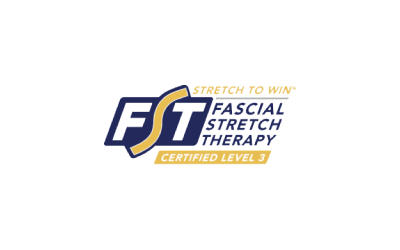Join the conversation.
Mobility Vs Flexibility – I am confused

Seeking Clarity?
So you have done your research, read about mobility, read about flexibility; some say you need a lot of one, but the other does not matter, or the two words have been used in the same sentence, but you do not understand the difference. Better still your Personal Trainer has given you ‘mobility work’ aka roll on a foam roller, as a warm up to help aid your stiffness (which never gets better).
That’s okay – this article seeks to place some context around the two words and what they truly represent.
In short, they share the same continuum, just at different ends. Unfortunately, they have been used in the general health and fitness world interchangeably and within the wrong context.
Flexibility can be defined as the amount of Passive movement available across any given joint i.e. the body is unable to achieve the motion without the assistance of external force such as another person, band or gravity.
Mobility, in the sense of FRC®, can be defined as flexibility + control, thus the range of Active movement available across any given joint under the direct control of the nervous system.
Flexibility, in itself, does not improve function or human movement as it represents Ranges of Movement the nervous system cannot control.
It is on this basis those extremely flexible humans (excluding Cirque and contortionists) – including many yoga practitioners – are still only one step away from an injury i.e. when they have a limb extended in a particular position, should an external force, which the body is not familiar with, is applied, the brain will throw up its protective neurological guard which places unknown stress on tissues, thus potentially creating injury.
It is the main focus of FRC® to both improve flexibility and simultaneously teach the nervous system how to control the newly acquired ranges. Furthermore, it allows an individual to generate power, strength and co-ordination across said ranges.
By our therapists at Restore Prehabilitation & Recovery® working alongside you, to assess which articulation(s) possess the greatest opportunities specific to your needs, together we can develop, educate and integrate a customised approach specific to you. This allows the new ranges to be continuously worked on daily basis alongside your current sport specific or general training and daily activities, making your mobility longer lasting and readily available, without a huge increase of activity to fit in to a busy lifestyle.
How is Joint Strength, Health and Longevity influenced by Mobility?
Traditional Strength and Condition training is well-versed on the benefits of progressive loading to muscular and bone tissues, however those in the main stream health and fitness industry often forget these benefits also apply to Fascia, Ligaments, Joint Capsules, Vessels and Nerves. With correct programming and the use of the FRC® system, the whole joint complex is considered thus improving tissue quality, strength and resilience as a whole.
The body is designed to move in multiple planes of motion, however traditional Strength and Conditioning training tends to focus in one plane of motion, which is not relevant to real life.
Going beyond the immediate athletic development and performance goals, associated with developing strength and neurological control via the process of true mobility development. Functional Range Conditioning® has safely and effectively been utilised across many client populations and age groups to preserve movement, function and slow the degenerative processes.
Cartilage tissues of the joint tend to have poor to little blood supply, receiving oxygen and nutrients from the surrounding joint and tissues by diffusion. During movement, pressure expresses the fluid and waste products out of the cartilage cells, with fresh oxygen and nutrients diffusing back in, once pressure is relieved. Activities such as Flowing or Yoga are not specific enough to all joints and it could be argued they do not move each joint in isolation to its outer limits of motion, therefore cartilage tissues, as a whole, can be missing vital care.
Continuously completing the same daily activities, such as walking, within the same limited Ranges of Motion may promote premature wearing of an individual’s cartilaginous surfaces.
With the correct education and programming, the use of FRC® will provide specificity to particular articulation(s), with a wider active range of motion, subsequently providing improvement in different ranges of motion to allow for repair by a wider diffusion of oxygen and nutrients through the wider joint structures.
Can Mobility Influence Performance Enhancement?
As mobility has been enhanced by increasing the functional ranges of motion across a joint (articulation), it allows improved agility, which is typically a goal for all sports and functional activity.
In addition, the increased functional ranges of motion allows for improved storage of potential energy during the lengthening cycle of a joint, which can be transferred into more usable force during the shortening cycle (closing of the joint).
Therefore, by improving mobility and greater ranges of motion, you unlock improved agility and the potential to develop more force.
If mobility did not positively influence performance, the below list of Sporting Institutes who currently utilise the FRC® System would not be available.

How do I Improve my Mobility?
Find yourself a certified FRC® Mobility Specialist (FCRms). The benefits of true mobility training can only be fully realised with the proper education into the cell adaptation, coaching, cueing and building body awareness to control your movement in your end ranges. Gain this understanding before taking on any of the copious material available on social media. Without this education, the risk of causing injury is real.
As always check you Health and Fitness professional’s credentials. They will be happy to disclose their relevant certifications when they have invested good time and finances into improving their knowledge.
Restore Prehabilitation & Recovery® are the only FRC® and FR Spine certified specialists on the South Island of New Zealand and will be able to utilise their wider array of specialist movement knowledge and skills to harness your true potential, like no other.
Contact now to find out more




